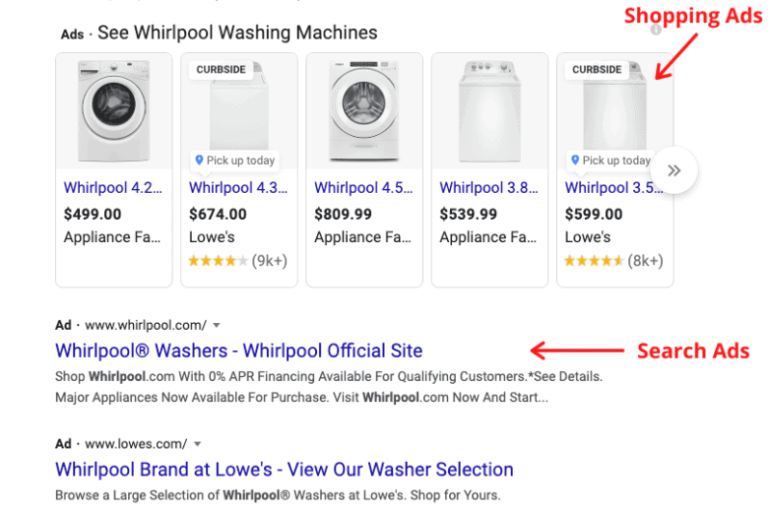There are many guides out there that tell you how to write good pay per click (PPC) ad copy that is effective in getting users to click on the ad and come to your website. They tell you:
- what copywriting elements of an ad you have control over (headlines, descriptions, display URL, call to action (CTA), ad extensions, your character allowance)
- how to avoid falling foul of advertising policies (don’t use trademarks or medical terms unless you have permission to, don’t use gimmicky or obscene language)
- how to write ad copy that sells your product or service (by showing your target audience that you understand their problem and that what you are selling can help solve it)
- how to prompt users to engage with your ad (by adding call-to-actions (CTA’s) and promoting unique selling points (USP’s) and extra incentives in the most prominent areas of the ad).
All this is very useful if you are launching your first campaign or a one-off campaign, but if you already have campaigns running and sending traffic to your site but the ads that are live have been running for a while now, when searching for ideas for new ads to refresh your advertising account, don’t just write anything new – write new ads to get meaningful audience insights and improve the quality of the traffic that your campaign is generating.

Don’t throw out what works
Before you rush into writing new copy, take a look at what you’ve shown to your audience so far. If you’ve been running at least two ads per ad group in accordance with Google advertising best practices, see if you can tell what users engage with the most based on the ad variants that you’ve been testing.
Though you may think that your ads are outdated or cringeworthy ever since you have been enlightened by those guides on how to write good ad copy, nevertheless, make the most out of the ad impressions that you’ve gained up ‘til now. Checking how your current ads, and ads that you have run before then paused, have performed allows you to be reminded of what has already been tested, so that you do not spend weeks testing what you think is new ad copy, only to find that your audience engage just as poorly with the ads as they did the last time the same copy was used. Moreover, by looking at historic performance, you will avoid pausing ads that have had high click-through rates (CTR). Leave some of the elements in ad variants that had high CTR to test alongside any new copy you write, and let the data tell you which ad users are more likely to click on, and which ad Google prefers to show.
How to analyse ads
When analysing the performance of your ads, ask yourself:
- Which ad variant does Google prefer to show? In our experience, it does not matter whether you have set the ad rotation to ‘Optimise’ or ‘Do not optimise’: Google will still show one or two variants much more frequently than the rest.
- Among ads that have the most impressions, which have had the highest CTR?
- What is being tested in each ad group? I.e. what differentiates one ad variant in each ad group from another? The element that is being tested is the one that you should keep.
Swim against the current when crafting your message
You know what elements of your current or past ads you want to keep and you’re hovering your mouse over the new ad icon. You’re itching to start writing but wait! Dedicate some time to look at the ads that are showing at the moment, for they will be your competition, whether you think they present a challenge to your business or not. Even if a company selling products or services that are completely unrelated to yours is showing ads to your target audience, they are still trying to take your audience’s attention away from you.
Analyse your competitors’ ads and ask yourself, while staying true to your brand’s tone of voice, can you find ways to make your own ad stand out? There are a lot of ads promoting “the best” product, “the perfect” product, “expertly selected” products – there is no problem with doing the same if this can be justified but do give people an idea of why your products are superlative, either in the main ad copy or in the extensions that accompany it. When considering how to write headlines, don’t just show a single headline that neatly incorporates the keyword your users search for, but test it alongside a headline that is unrestricted by a need to include the target keyword, a headline that aims to win your users’ hearts rather than just meeting the requirements of your ad platform’s algorithm.
How to view competitors’ ads
Many ad platforms have tools to enable you to view competitors without wasting one of your own ad impressions, such as Google’s Ad Preview tool or Facebook’s Ad Library. Where tools are not available, you can visit, spend time on and go as far as to begin the process of converting on the website of your competitors, with the aim of being able to see their remarketing ads.
How to write ad copy for display, video and social ads
In the case of display, video and social ads, the image, animation, film, dialogue, sound, or all of the above often have more influence than words and should therefore be the elements that you spend most of your time perfecting. When you do come to adding the accompanying text, think about:
- font
- size
- position
- casing
- whether to substitute emojis for words
- creating ad variants with ad copy of varying lengths for testing (when you are using an ad format that have a large character allowance).
Keep your audience front of mind
Now that you are aware of what copy captivated your audience before and what other ads your own will be up against, it’s time to create your new ads! As you write your new copy, think about the interests of the audiences that you target on display and social media networks, and on search networks think about the intention behind your target audience’s searches.
Remember that there may be more than one possible intention behind an interest or a search, in which case you should ensure that your ad messaging is generic enough to address all the possible needs of the user. If you have landing pages that are optimised for each of the specific needs, you can promote them in ad extensions.
Someone interested in ethical products or who searches for ‘ethical gifts’ may be open to buying from any of these types of brands or just one type: brands with a small carbon footprint; brands that take actions to offset their carbon footprint; brands that have a traceable supply chain that ensures that child labour is not used in the making of their products; brands that pay suppliers a fair price; brands that ensure that no animal cruelty occurs in the making of their products; brands that do not use animal testing; brands that do not kill animals to make their products; charities; and brands that support a charity.
Adapt your message according to the stage at which your user is at on their journey to conversion.
Someone looking for ‘binoculars for birdwatching’ may not yet have an idea of how much binoculars cost or know what to consider when buying a pair of binoculars for birdwatching, whereas someone who wants ‘secondhand binoculars for birdwatching’ is likely to know the general price range and either do not want to pay even for the cheapest brand-new pair or want to pay less for a high-quality pair with a high resolution and numerous features.
Someone searching for ‘binoculars for birdwatching uk’ within the UK is likely to want their binoculars delivered to them for free, typing in ‘uk’ to exclude foreign stockists that may require a shipping fee.
Someone who has already visited your site is likely to be compelled to return to your site if they are made aware of the benefits of being your customer rather than your competitor’s. Here are just a few of the things that might persuade them: you offer a larger range of brands and models; you have more knowledge of your products; your design is more affordable, of a higher quality, or more unique; you offer free delivery, a free trial, or a new customer discount.
Someone searching for ‘Avalon pro HD binoculars’ already knows the brand and model and will be swayed by the manufacturer or the retailer that promises the best customer experience. Here are just a few of the things that might improve their experience: a price match promise; a fuss free checkout; finance options; a highly rated and widely reviewed customer service; an aftercare service or a comprehensive guide about the product (how to assemble it, how to use it, how to care for it, etc.).
Get creative with URL paths
You’re satisfied that you’ve got your point across in your new copy, and that’s wonderful, but don’t take your creative juices off the boil yet! Where you can customise your URL path, why not do so? While the general aim of a URL path is to give users an idea of what the page they will arrive at when they click on the ad is about, you can get creative by:
1. Using different symbols
In SEO, the best practice for writing URL’s is to use hyphens instead of underscores to express the space in between words, because web crawlers read hyphens as a space but not underscores, e.g. ‘fathers_day’ is read as ‘fathersday’ and ‘fathers-day’ is read as ‘fathers day’. However, underscores more clearly separate words and give the URL the semblance of written text. When writing ads, you can use underscores as well as hyphens.
2. Using different casing
In SEO, the best practice for writing URL’s is to use lowercase letters only, because capitalisation of some letters in the URL may lead to inconsistencies when the URL is linked to from other pages, and inconsistencies will lead web crawlers, which are case-sensitive, to penalise the website for duplicate content. However, there are times when capitalisation help brands to stand out. When writing ads, you can use capital letters.
3. Incorporating USP’s
The URL appears at the top, so even if the user does not read the ad description, they may have caught a glimpse of the URL on their way to reading the ad headline. When writing ads, you can reinforce a USP by mentioning it in the URL.
Think chameleon when choosing your text format
You’ve decided on what to say in every part of your ad that can be customised, but then you remember that among the ads that are currently showing, you saw some that read like sentences in a book and others that read as if every word in the ad is part of a very long book title. In your final polishing of your new ads, you might wonder which formatting will get you more ad clicks. Based on what we know about user behaviour, formatting that helps an ad to blend in with organic listings and content will get more ad clicks than formatting that makes your ad look obviously like a paid-for piece of content. This is because users prefer to click on organic results rather than paid – in 2019, YouGov ran a survey of users in the US, India and the UK in 2019 and reported that that 72% of respondents stated that they either click only on organic results or on organic results the majority of the time. The younger the age of the user, the more likely they will discriminate between an ad and organic content, and the majority of internet users are discriminative – 71% of users in YouGov’s 2019 survey were aged 18-40, millennials who grew up in the age of the internet and who are wary of ads.
Over the years we have written ad copy and optimised thousands of campaigns for hundreds of Google Ads accounts using our audience-led and data-led approach. By sharing and continuing to put into practice what we’ve discovered to have driven more traffic to our clients’ websites and helped our clients better understand their target audience, we hope to help you too to get the most out of your advertising budget.
Follow my contributions to the blog to find out more about paid search advertising, or sign up to the ThoughtShift Guest List, our monthly email, to keep up-to-date on all our blog posts.






